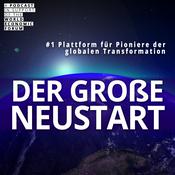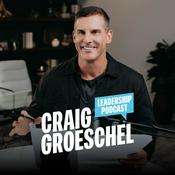232 episodes

How AI is changing weather forecasting
1/02/2026 | 44 mins.
Weather forecasting drives billions of economic decisions — from grid operations to evacuation planning. Better forecasting could improve supply chain planning, disaster warnings, and renewable integration. The industry has decades of satellite observations and ground measurements, making it ripe for AI-driven advancements. And it’s already happening. But how exactly does AI get used in weather forecasting, and how does it actually lead to improvements? In this episode, Shayle talks to Peter Battaglia, senior director of research at Google DeepMind’s sustainability program, which launched a new AI-powered weather forecasting model in November 2025. They cover topics like: Why precipitation is so much harder to predict than temperature How the weather industry works, with governments creating global models and private companies refining them for specific use cases What AI models can see that traditional supercomputer simulations can’t Novel sources of data like cell phones, door bells, and social media Resources: Latitude Media: Where are we on using AI to predict the weather? Latitude Media: Could AI-fueled weather forecasts boost renewable energy production? Catalyst: Specialized AI brains for physical industry Credits: Hosted by Shayle Kann. Produced and edited by Daniel Woldorff. Original music and engineering by Sean Marquand. Stephen Lacey is our executive editor. Catalyst is brought to you by Uplight. Uplight activates energy customers and their connected devices to generate, shift, and save energy—improving grid resilience and energy affordability while accelerating decarbonization. Learn how Uplight is helping utilities unlock flexible load at scale at uplight.com. Catalyst is brought to you by Antenna Group, the public relations and strategic marketing agency of choice for climate, energy, and infrastructure leaders. If you're a startup, investor, or global corporation that's looking to tell your climate story, demonstrate your impact, or accelerate your growth, Antenna Group's team of industry insiders is ready to help. Learn more at antennagroup.com.

The gas turbine crunch
12/26/2025 | 38 mins.
Demand for turbines is growing fast, but so are lead times — causing serious headaches for developers and even cancellations. In Texas, one of six cancelled projects cited “equipment procurement constraints” as the reasons for its withdrawal. Lead times are stretching to four years and sometimes more. Costs are climbing. So what’s behind the bottleneck? In this episode, Shayle talks to Anthony Brough, founder and CEO of Dora Partners, a consulting firm focused on the turbine market. Shayle and Anthony cover topics like: Why previous boom-bust cycles in turbine manufacturing have left the industry skittish — and why Anthony says leaders are approaching this new peak with “guarded optimism” The competing demands on the turbine supply chain, including from power, oil and gas, and aerospace industries How lead times have ballooned to four years and, in some cases, even longer Factors affecting the market beyond load growth, like renewables, storage, affordable gas, and coal retirements How investment in tech innovation has raised turbine efficiency How the industry is preparing for hydrogen — if hydrogen scales up Resources: Latitude Media: Engie’s pulled project highlights the worsening economics of gas Latitude Media: High costs, delays prompt withdrawal of five more Texas gas plants Power Magazine: Gas Power's Boom Sparks a Turbine Supply Crunch Marketplace: Will we have enough natural gas turbines to power AI data centers? CTVC: 🌎 Gas turbine gridlock #236 Credits: Hosted by Shayle Kann. Produced and edited by Daniel Woldorff. Original music and engineering by Sean Marquand. Stephen Lacey is our executive editor. Catalyst is brought to you by EnergyHub. EnergyHub helps utilities build next-generation virtual power plants that unlock reliable flexibility at every level of the grid. See how EnergyHub helps unlock the power of flexibility at scale, and deliver more value through cross-DER dispatch with their leading Edge DERMS platform, by visiting energyhub.com. Catalyst is brought to you by Bloom Energy. AI data centers can’t wait years for grid power—and with Bloom Energy’s fuel cells, they don’t have to. Bloom Energy delivers affordable, always-on, ultra-reliable onsite power, built for chipmakers, hyperscalers, and data center leaders looking to power their operations at AI speed. Learn more by visiting BloomEnergy.com. Catalyst is supported by Third Way. Third Way’s new PACE study surveyed over 200 clean energy professionals to pinpoint the non-cost barriers delaying clean energy deployment today and offers practical solutions to help get projects over the finish line. Read Third Way's full report, and learn more about their PACE initiative, at www.thirdway.org/pace.

Will inference move to the edge?
12/18/2025 | 47 mins.
Today virtually all AI compute takes place in centralized data centers, driving the demand for massive power infrastructure. But as workloads shift from training to inference, and AI applications become more latency-sensitive (autonomous vehicles, anyone?), there‘s another pathway: migrating a portion of inference from centralized computing to the edge. Instead of a gigawatt-scale data center in a remote location, we might see a fleet of smaller data centers clustered around an urban core. Some inference might even shift to our devices. So how likely is a shift like this, and what would need to happen for it to substantially reshape AI power? In this episode, Shayle talks to Dr. Ben Lee, a professor of electrical engineering and computer science at the University of Pennsylvania, as well as a visiting researcher at Google. Shayle and Ben cover topics like: The three main categories of compute: hyperscale, edge, and on-device Why training is unlikely to move from hyperscale The low latency demands of new applications like autonomous vehicles How generative AI is training us to tolerate longer latencies Why distributed inference doesn‘t face the same technical challenges as distributed training Why consumer devices may limit model capability Resources: ACM SIGMETRICS Performance Evaluation Review: A Case Study of Environmental Footprints for Generative AI Inference: Cloud versus Edge Internet of Things and Cyber-Physical Systems: Edge AI: A survey Credits: Hosted by Shayle Kann. Produced and edited by Daniel Woldorff. Original music and engineering by Sean Marquand. Stephen Lacey is our executive editor. Catalyst is brought to you by EnergyHub. EnergyHub helps utilities build next-generation virtual power plants that unlock reliable flexibility at every level of the grid. See how EnergyHub helps unlock the power of flexibility at scale, and deliver more value through cross-DER dispatch with their leading Edge DERMS platform, by visiting energyhub.com. Catalyst is brought to you by Bloom Energy. AI data centers can’t wait years for grid power—and with Bloom Energy’s fuel cells, they don’t have to. Bloom Energy delivers affordable, always-on, ultra-reliable onsite power, built for chipmakers, hyperscalers, and data center leaders looking to power their operations at AI speed. Learn more by visiting BloomEnergy.com. Catalyst is supported by Third Way. Third Way’s new PACE study surveyed over 200 clean energy professionals to pinpoint the non-cost barriers delaying clean energy deployment today and offers practical solutions to help get projects over the finish line. Read Third Way's full report, and learn more about their PACE initiative, at www.thirdway.org/pace.

Can AI revolutionize EPC?
12/11/2025 | 35 mins.
Big construction projects in the U.S. are notoriously unpredictable, often finishing over budget and behind schedule. Part of the problem is the inherent complexity of these kinds of projects, like data centers and first-of-a-kind plants. But there’s another problem: the companies that actually build these projects — called EPC firms for engineering, procurement, and construction — often lack strong incentives to control costs or deliver on time. That’s the thesis behind Unlimited Industries, a new startup focused on using AI to develop multiple project designs upfront and reduce project risks. So what would it take to actually cut costs and shorten construction timelines? In this episode, Shayle talks to Alex Modon, co-founder and CEO of Unlimited Industries. The company recently announced a $12 million fundraise as it emerged from stealth. Shayle and Alex cover topics like: How EPC incentives and contract structures drive cost overruns Why bespoke projects prevent learning and standardization The role software and AI can play in design and risk reduction EPC Managing risks – including geopolitics, contractor reliability, and supply chains Resources: Catalyst: FOAK tales The Green Blueprint: Shortening the nuclear development cycle from decades to years Catalyst: The cost of nuclear Credits: Hosted by Shayle Kann. Produced and edited by Daniel Woldorff. Original music and engineering by Sean Marquand. Stephen Lacey is our executive editor. Catalyst is brought to you by EnergyHub. EnergyHub helps utilities build next-generation virtual power plants that unlock reliable flexibility at every level of the grid. See how EnergyHub helps unlock the power of flexibility at scale, and deliver more value through cross-DER dispatch with their leading Edge DERMS platform, by visiting energyhub.com. Catalyst is brought to you by Bloom Energy. AI data centers can’t wait years for grid power—and with Bloom Energy’s fuel cells, they don’t have to. Bloom Energy delivers affordable, always-on, ultra-reliable onsite power, built for chipmakers, hyperscalers, and data center leaders looking to power their operations at AI speed. Learn more by visiting BloomEnergy.com.

Who benefits from the AI power bottleneck?
12/04/2025 | 34 mins.
The bottleneck holding back AI is a scarcity of power, or so goes the story. That may be true — and plenty of reporting backs it up — but different actors in the space face varying incentives to play up or play down that narrative. So what incentives are at play, and how do they shape each player's story? In this episode, Shayle talks to Shanu Mathew, senior vice president and portfolio manager-analyst for U.S, sustainable equity at Lazard. Last month on X, he posted a breakdown of the actors — including hyperscalers, chip makers, utilities, and others – and how the different incentives they face shape how they talk about energy and AI. They cover topics like: Hyperscalers’ mixed incentives: the benefits of building their own capacity vs encouraging others to overbuild Why equipment makers, chipmakers, and land developers benefit from talking up the bottleneck to boost demand for their services How independent power producers and gas players benefit from high prices How the power-bottleneck narrative has shifted over time Resources: Latitude Media: ERCOT’s large load queue has nearly quadrupled in a single year Latitude Media: The power bottleneck is changing data center financing Latitude Media: Early-stage data centers are driving up US power demand forecasts Credits: Hosted by Shayle Kann. Produced and edited by Daniel Woldorff. Original music and engineering by Sean Marquand. Stephen Lacey is our executive editor. Catalyst is brought to you by EnergyHub. EnergyHub helps utilities build next-generation virtual power plants that unlock reliable flexibility at every level of the grid. See how EnergyHub helps unlock the power of flexibility at scale, and deliver more value through cross-DER dispatch with their leading Edge DERMS platform, by visiting energyhub.com. Catalyst is brought to you by Bloom Energy. AI data centers can’t wait years for grid power—and with Bloom Energy’s fuel cells, they don’t have to. Bloom Energy delivers affordable, always-on, ultra-reliable onsite power, built for chipmakers, hyperscalers, and data center leaders looking to power their operations at AI speed. Learn more by visiting BloomEnergy.com. Catalyst is supported by Third Way. Third Way’s new PACE study surveyed over 200 clean energy professionals to pinpoint the non-cost barriers delaying clean energy deployment today and offers practical solutions to help get projects over the finish line. Read Third Way's full report, and learn more about their PACE initiative, at www.thirdway.org/pace.
More Business podcasts
Trending Business podcasts
About Catalyst with Shayle Kann
Listen to Catalyst with Shayle Kann, REAL AF with Andy Frisella and many other podcasts from around the world with the radio.net app
Get the free radio.net app
- Stations and podcasts to bookmark
- Stream via Wi-Fi or Bluetooth
- Supports Carplay & Android Auto
- Many other app features
Get the free radio.net app
- Stations and podcasts to bookmark
- Stream via Wi-Fi or Bluetooth
- Supports Carplay & Android Auto
- Many other app features

Catalyst with Shayle Kann
download the app,
start listening.







































